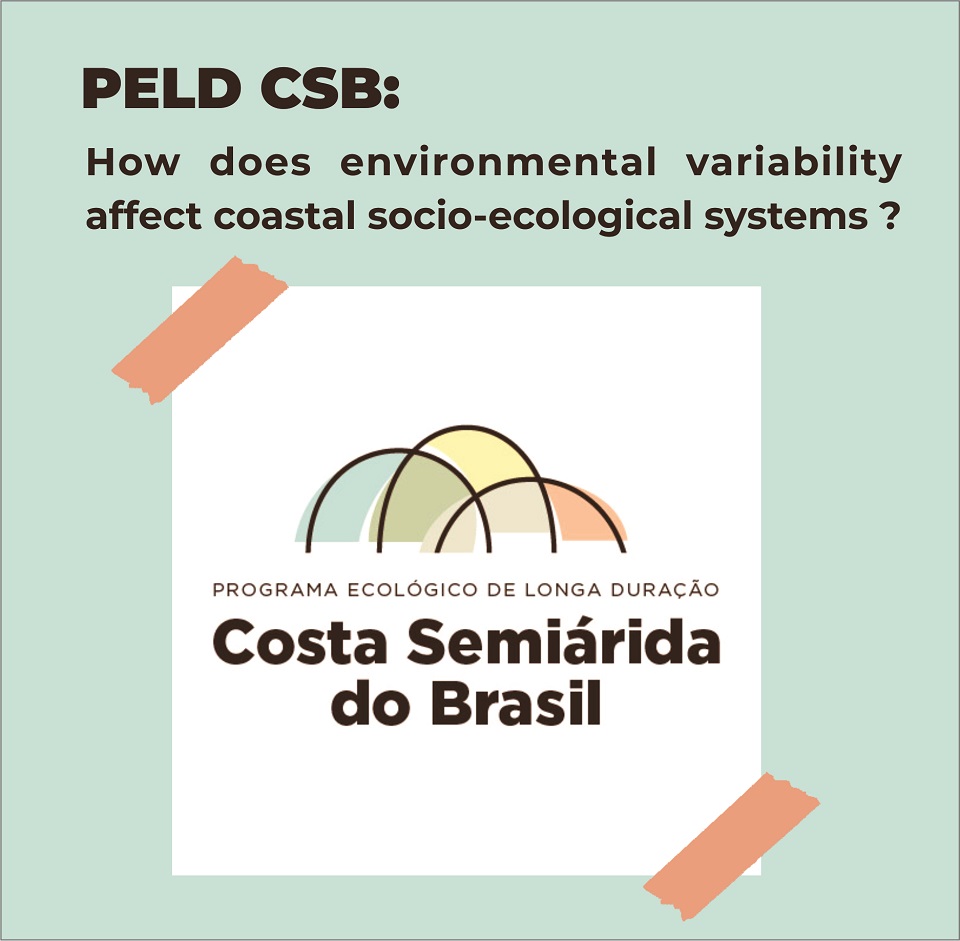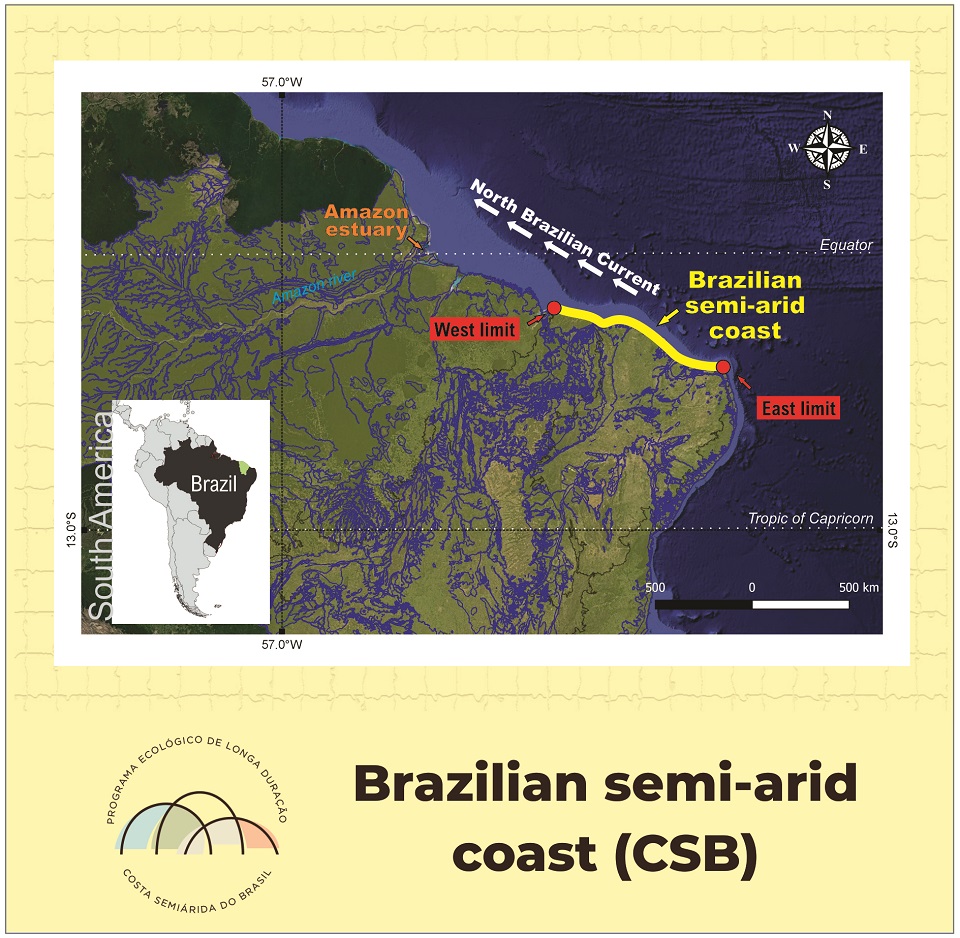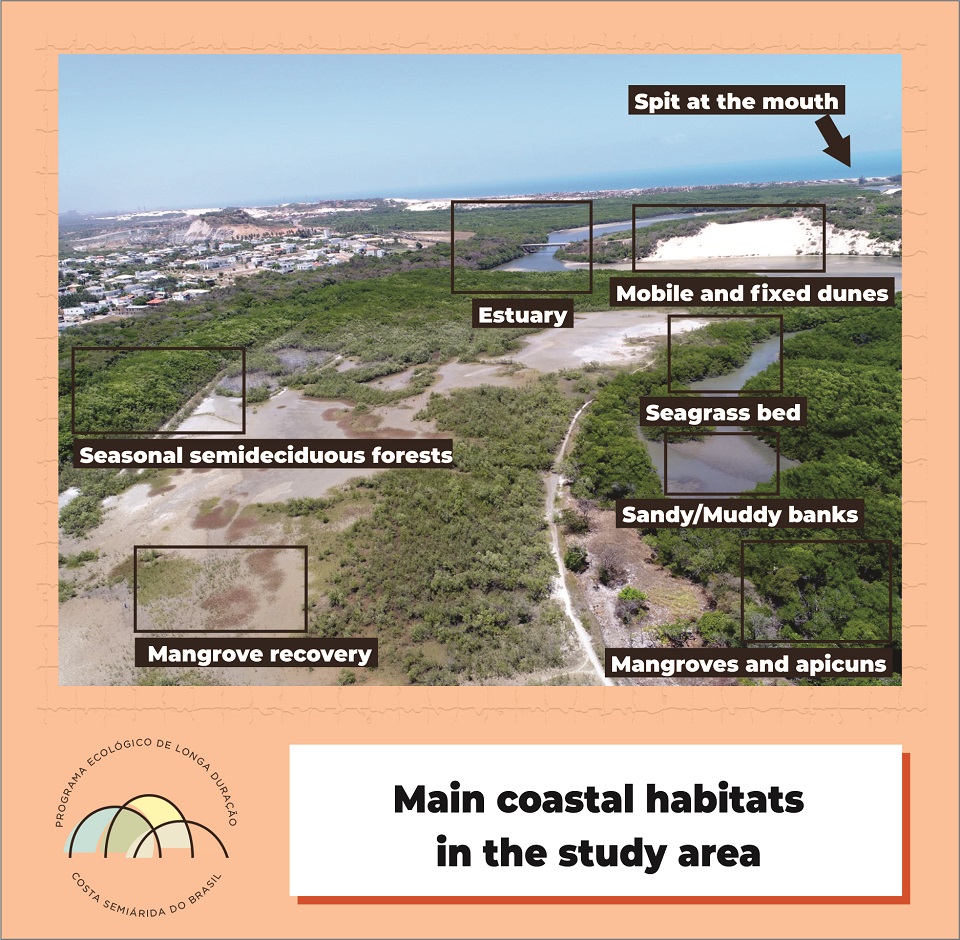Presentation

The semi-arid coast of Brazil (CSB) is located at the easternmost point of South America, projected over the Equatorial South Atlantic (part of Maranhão, Piauí, Ceará, and part of Rio Grande do Norte). In this coastal region, there is a unique set of tropical landscapes and traditional human communities, such as fishermen and shellfish gatherers.

It is a macro geomorphological compartment of the Northeast coast of Brazil, between Ponta dos Mangues Secos in Maranhão (2°15’5” S, 43°36’46” W) and Cabo do Calcanhar in the Rio Grande do Norte (5°9’24” S, 35°30’6” W), being the only stretch of the Brazilian coast under increasing direct influence of the semi-arid climate, also presenting unique oceanographic, ecological, geographic and geomorphological characteristics (Muehe, 2010).

This area encompasses various features, such as estuaries, beach strips, seagrass beds, dunes, sandy bars, seasonal semideciduous forests, tropical reefs and Sandy-clay banks, in addition to mangroves (Barros et al., 2016; Godoy et al., 2015; Pinheiro et al., 2016), which make up relevant coastal ecosystems under the strong effect of global environmental changes in the Anthropocene and with important human communities. Despite this, this unique region on the planet does not have a PELD program funded by the federal research agency (CNPq) and state agencies (FAPs).

Conducting long-term ecological research and programs (for example, the Long-Term Ecological Research Program – PELD) in tropical coastal environments is still insufficient compared to subtropical and temperate coast systems. Still further neglected are the arid and semi-arid coasts of the planet, whose ecological dynamics are practically unknown despite the high demographic density, vulnerability, and unique biodiversity of these systems (Huxman et al., 2004; Poulter et al., 2014). In this context, the absence of a PELD site on the semi-arid tropical coast of Brazil should be considered a critical point of this project, considering the high social, economic, and ecological importance of the region and its vulnerability to the impacts of the Anthropocene.

